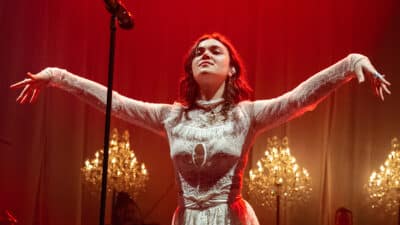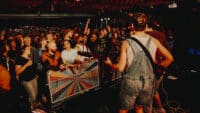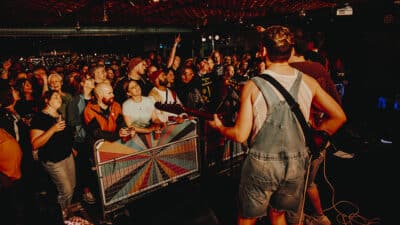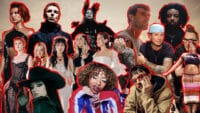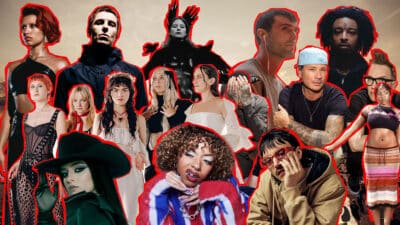Music

WTF is…?
WTF is… bedroom pop?
Our new series deep dives into the world of confusing subgenres, kicking off with one that's all about DIY
Photo by Sincerely Media
Pop subgenres often have helpfully literal names. Hyperpop is pop on steroids. Witch pop sounds like it could have been made by – you guessed it – witches. And bedroom pop, the lo-fi, home-brewed subgenre for the fans of the fuzzy and warm, began in bedrooms.
With the rise of home computers and music sharing platforms such as Soundcloud and YouTube, a whole new world of possibilities opened up for independent artists. A studio set-up could be as simple as a laptop and a guitar. A camera and a microphone under the Christmas tree could start someone on a path to global success. As bedroom pop continues to grow in popularity and platforms such as YouTube and TikTok continue to create new stars, here’s everything you need to know about the subgenre.
Early stages
While bedroom pop is a fairly modern phenomena, only really becoming mainstream in the 2010s, some trace the origins of the genre back to the 1950s and 60s, particularly the hastily-made, on-a-budget rock and roll of the era that saw some musicians recording in homes or garages with cheap equipment. The Beach Boys’ 1967 albums Smiley Smile and Wild Honey were famously recorded in Brian Wilson’s home studio. In 1970, Paul McCartney released McCartney, a decidedly homemade record that didn’t fly with critics. McCartney was several decades too early to the DIY music trend.
One of the most prominent early influences on bedroom pop was R. Stevie Moore’s 1968 album Phonography. Moore recorded mostly on reel-to-reel tape in his parents’ Tennessee basement, embracing the DIY sound without aiming for studio polish. For this reason, Matthew Ingram of The Wire called him “the grandfather of lo-fi”.
1979 saw the release of the Portastudio, the home recording unit from Teac that allowed users to record four separate tracks of instrumentation onto one cassette. The Portastudio didn’t offer uses anywhere near the same quality as a studio-recorded track, but it did offer them something precious – the power to record with just a mic, and instrument or two, and somewhere to play.
The rise of lo-fi
It wasn’t until the 90s that the term ‘lo-fi’ fell into common usage among music critics, although everyone seemed a little uncertain of its actual definition. It seemed that the term could be applied to any new independent band, particularly the slackers who came of age in the early 90s, such as Guided By Voices, Pavement and Sebadoh. Eventually, lo-fi came to define music that turned imperfection and the signs of a DIY set-up (buzzing, snatches of voices, low-quality recordings, simple arrangements) into an integral part of its aesthetic.
As technology advanced, recording set-ups became more intimate. People could now create music lying on their bedroom floors, playing guitar or keys into a laptop – and that’s exactly what they started doing. At the peak of the 00s music blog boom, sensitive electronic artists like Casiotone For The Painfully Alone and Youth Lagoon established themselves with hushed, painfully intimate electronica recorded in isolation on keyboards and synths.
With easy recording options came the world of social media, the perfect place for an aspiring artist with no connections to find an audience. Young musicians began to post covers and original songs to YouTube, or self-release them on SoundCloud and Bandcamp. These songs, by nature of their intimate creation, were often revealing and confessional, lyrics-focused and with an appealing vulnerability that captured a largely teenage audience. Bedroom pop became a means of inviting others into your space, without needing anyone else in the room.
Bedroom pop today
As TikTok becomes the favourite social media platform of Gen Z, bedroom pop still reigns. The pandemic saw a generation of young people starved for connection – many of them found it in tell-all lyrics and warm, gentle instrumentals, sent straight from someone else’s bedroom to theirs. Gen Z like their celebrities relatable, and bedroom pop gives the impression that just about anyone could get behind the mic and give it a go.
“This is for all of the kids who are making music in their bedroom today,” said Finneas O’Connell, when he and sister Billie Eilish accepted one of their many Grammys. Eilish is pointed to by some as an example of bedroom pop entering the mainstream. Two siblings making music in their bedroom, on their computers, going all the way to one of the world’s biggest award shows and winning just about every category.
Except – what Billie and Finneas do isn’t really bedroom pop, at least not anymore. From Finneas’ childhood bedroom they have made two polished, fully fledged alternative pop albums, confidently constructed with production that sounds like the tracks could have come from any fancy LA studio. These days, with high quality equipment available on Amazon and industry-standard software downloadable onto a laptop, recording in a bedroom isn’t enough to make something lo-fi. If the ‘bedroom’ in bedroom pop is a state of mind, then artists might as well head into studios and add the artificial crackle of a cheap mic.
Bedroom pop artists you should know
Rex Orange County
Alexander James O’Connor taught himself to use Apple’s Logic software and self-released his first album on Soundcloud and Bandcamp. He’s now one of bedroom pop’s most mainstream stars, with his most recent album Who Cares? reaching No.1 in the UK and US.
mxmtoon
Maia recorded her early tracks on Garageband in her parents basement, creating percussion tracks with household objects. She posted her songs secretly to YouTube, until her online following became too large to conceal from her family and she embarked on a music career. Her sophomore album, Rising, arrived in May of last year.
girl in red
Norwegian singer Marie Ulven Ringheim started releasing music to Soundcloud after receiving a Blue Yeti microphone from her father. She’s since built a dedicated following, particularly in the queer female community, and won three Norwegian Grammys. She’s set to support Taylor Swift on the US leg of her Eras tour this year.
Clairo
Claire Cottrill began posting covers and remixes to Soundcloud, Bandcamp and YouTube at 13. In 2020 she won the NME Award for Best New Act in the World, and the following year she released her sophomore album, Slings, to critical and commercial success.
beabadoobee
Beatrice Laus posted her first songs on YouTube before signing to independent label Dirty Hit. Her sophomore album, Beatopia, was released last year.
Cavetown
Robin Skinner has been releasing music on YouTube and Bandcamp since his early teenage years, and even after signing a record deal he still continues to make music pretty much entirely alone. His fifth album, Worm Food, was released in November of last year.
dodie
Youtuber Dodie Clark began her career posting covers and original songs to the platform, going on to self-release four Eps. Her debut album Build A Problem arrived in 2021 and reached No.3 on the UK charts.
PinkPantheress
PinkPantheress started using GarageBand to create songs and backing tracks at age 17. She began posting to SoundCloud and later to TikTok, where she found a large audience and went viral multiple times. She’s since received BRIT and Ivor Novello nominations and opened for Halsey on their 2022 tour.





